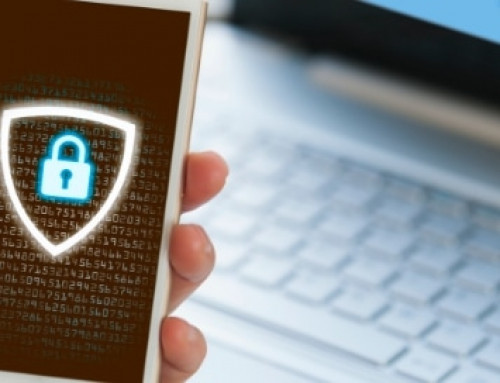When talking about cyberattacks, the image of a hacker using highly sophisticated code is what first comes to mind. However, while some attacks need more technical expertise to be successful, many of today’s cyberattacks only require hackers to come up with a convincing lie in an email. Spear phishing is one of these cyberattacks, and it’s a growing threat affecting businesses in Chicago, Tampa, and the rest of the United States.
To protect your business, we’ve put together this comprehensive guide on spear phishing attacks.
What is spear phishing?
Spear phishing is a form of social engineering that uses fraudulent emails to trick individuals into sharing sensitive information or downloading malware. Unlike traditional phishing scams, which use a dragnet approach to affect as many targets as possible with one email blast, spear phishing is designed to target a specific organization or individual. Spear phishing is more dangerous because cybercriminals research their target so they can effectively manipulate them. The worst part is that more people are sharing information about themselves on social media, so it’s easier than ever for cybercriminals to launch spear phishing attacks.
Related reading: Learn how phishing is used in business email compromise attacks
Who is susceptible to spear phishing?
Spear phishing can affect any individual, provided that cybercriminals have the right motivation and background information on their target. Financially motivated cybercriminals, for example, tend to target users who have access to a company’s payroll, credit card, and insurance information. This would include accounting teams and C-suite executives.
Other cybercriminals may use spear phishing to steal personal information that would enable them to commit identity theft. In this case, employees in the human resources and sales departments are often targeted. Such a wide range of potential spear phishing targets implies that everyone plays an integral role in protecting company data.
How can you defend against spear phishing?
Safeguarding your business from spear phishing attacks requires a combination of technical solutions and good security awareness.
1. Train employees to recognize the telltale signs of spear phishing
Being able to identify a spear phishing attack is a crucial first step to protecting your business. Therefore, your organization must provide quarterly security training sessions that cover how to spot and avoid spear phishing scams. Although phishers employ various tricks to deceive their targets, there are common spear phishing signs that your employees should watch out for:
- Unsolicited contact – If you receive emails from a person or organization you weren’t expecting, they could be cybercriminals masquerading as legitimate entities to deceive you.
- Requests for personal information – Spear phishing emails often ask their victims to share sensitive or confidential information. To win the trust of the target, cybercriminals will even recall personal details about the target.
- Embedded links – Hackers usually include links in spear phishing emails that, when clicked on, can lead unwitting victims to a corrupted or malware-laced website.
- Suspicious email attachments – Seemingly innocuous documents or programs included in an email can be embedded with malware that automatically spreads when downloaded.
- Unexpected urgency – Spear phishing emails may instill a sense of urgency to trick recipients into disclosing sensitive information or clicking on links without a second thought. For instance, a fraudulent message may claim that the target’s bank account will be frozen unless they promptly provide their details for “verification.”
- Spoofed email addresses – A spoofed email address is one in which the sender’s name and domain resembles those of legitimate email addresses. Some of these spoofed addresses feature slight spelling variations on a known email address. For example, “j.smith@abccompany.com” could be spoofed as “j.smit@abcdcompany.com.”
- Misspelled words and poor grammar – Poorly written spear phishing emails may contain typographical and grammatical errors.
2. Verify emails using a separate channel
When in doubt about an email, you and your employees should verify its authenticity before interacting with it. This involves directly contacting the company or individual that sent the email through their official website or phone number, not the contact details displayed in the email. If the email in question is inauthentic, users should delete it immediately and warn other people in the company to be cautious of potential phishing attacks.
3. Be careful of oversharing information online
Any information found online about your business or employees can make you vulnerable to attack. Publicly shared selfies in the workplace, for instance, may allow cybercriminals to glean sensitive information captured in the background like a classified document or location. Using these details, cybercriminals can concoct a more convincing lie for their spear phishing campaigns. Employees may even leave clues about their password or answers to security questions (e.g., birthplace or mother’s maiden name) on their online profiles. This gives cybercriminals an easy way into your employees’ email accounts and perform spear phishing scams from within.
The best way to reduce your company’s risk exposure is for everyone to avoid oversharing information online. All employees must adjust their privacy settings on social media to ensure that personal information can only be accessed by trusted individuals. You should also create a policy that forbids staff from sharing critical information, such as Social Security numbers, proprietary documents, and geotagged photos of the workplace to anyone online.
4. Test your staff’s security awareness
To make sure that your staff are well-equipped to detect cyberattacks, you can set up mock spear phishing exercises using solutions like KnowBe4. These are simulations in which you send your employees fake emails that closely resemble real-world spear phishing attacks. Emails may even be personalized using the names of certain members of the staff to test their reactions.
Afterwards, staff must be evaluated on how they responded to suspicious emails. If employees interact with a simulated email’s links or attachments, they’ll need refresher security training sessions. This ensures that employees are properly educated about the dangers of spear phishing and what they should do if they encounter a similar situation in the workplace.
5. Use robust email security solutions
Email security software scans inbound messages for malicious content before they reach company inboxes. At their most fundamental level, email security software uses threat intelligence databases to detect and filter the latest spam and phishing emails. However, this can only defend against known phishing threats.
More robust email security solutions like Cisco Secure Email offer filtering capabilities, but they also leverage artificial intelligence technology to detect unknown threats. These advanced solutions check the email sender’s email address, location, and reputation to ensure that the sender is trustworthy. It then reviews email content for any signs of spear phishing, such as requests for sensitive information or messages instilling a sense of urgency. If a suspected spear phishing message contains an attachment, email security software analyzes its behavior in an isolated virtual sandbox. This allows you to safely determine whether malware is embedded in a file. Email security software can also trace URL link destinations and instantly block access to them if they’re deemed unsafe.
Once the software detects a fraudulent email, it either quarantines or removes the email completely from the company’s email server. It then blocks all future correspondence from the suspected email address and sends a warning to employees about potential scams.
6. Install the latest security updates
Spear phishing attacks are constantly evolving. Recently, cybercriminals have been using the COVID-19 pandemic as an effective pretense for their scams. Meanwhile, other phishing emails are employing more sophisticated technology to hide malware attachments and links so they can evade detection by traditional security software.
It’s therefore important to update your software and operating systems regularly. Updates often contain patches for security vulnerabilities, which cybercriminals could exploit to gain access to your computer. By keeping your firewalls and other security software up to date, your systems are better equipped to detect and prevent the latest threats.
7. Enable multifactor authentication
Cybercriminals often use spear phishing to steal their target’s passwords so they can gain access to company accounts. Multifactor authentication protects your business from this by requiring users to provide another set of login credentials to access their accounts. That means in addition to submitting passwords, users may be required to scan their fingerprint or enter a one-time passcode generated by a security app on their mobile device. Unless cybercriminals have access to the other set of login credentials, it’s practically impossible for them to breach your accounts.
Spear phishing is a serious problem for businesses, but it is preventable if you’re vigilant and use the right security measures. At Dynamic Solutions Group, we can lend our top-notch expertise and provide powerful defenses to keep your business out of harm’s way. Call us now to learn more about our comprehensive cybersecurity services.






